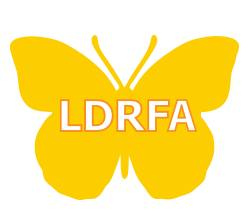Here’s the good news: if you suffer from learning disabilities, attention deficit hyperactivity disorder (ADHD) or dyslexia, you are entitled to certain inalienable rights under the Individuals with Disabilities Education Act 2004 (IDEA), Section 504 of the Rehabilitation Act of 1973, and the Americans with Disabilities Act (ADA). know your rights
Table of Contents
ToggleThis means that – once you have been diagnosed List Testing Agencies – you are entitled to receive accommodations that will allow you to compete as a student at school or as an employee in the workplace. That’s the law!
But now the bad news: laws don’t work unless people advocate for them. Building skills for self-advocacy is important. Knowledge is power and understanding these laws will improve your or your child’s educational success and life!
Advocacy self-advocacy are critical

When it comes to being a champion for your rights, whether as children and adults, awareness and self-advocacy are critical components for success. These laws define the rights of students with learning disabilities, dyslexia, and adults with ADHD. These individuals are legally entitled to accommodations and special services to help them overcome their learning problems. These laws also protect people with learning disabilities, dyslexia, and ADHD against unfair and illegal discrimination.
These laws define the rights of students with learning disabilities, dyslexia and ADHD. These individuals are legally entitled to special services to help them overcome and accommodate their learning problems. These laws also protect people with learning disabilities, dyslexia and ADHD against unfair and illegal discrimination.
If the individual is under 18 and is attending a public school, they can be evaluated and diagnosed with a learning disability and receive special services in their school by receiving an Individualized Education Plan (IEP). If the individual is over 18, they can still qualify for many services but they need to have an evaluation and diagnosis that establishes they have a learning disability. They can also then advocate for appropriate accommodations at a workplace, college or trade school.
In High School, if a student has an IEP, the responsibility is on the school to provide appropriate educational support and adj for the student. In college, however, the burden is on the student to advocate for these accommodations, and know precisely which accommodations they need. Receiving appropriate accommodations as an adult is a matter of civil rights under anti-discrimination laws such as the American Disabilities Act (ADA).
Good News in NYS
Governor Cuomo signed into law a dyslexia bill sponsored by assembly member Jo Anne Simon. The law instructs the State Department of Education to comply with federal guidelines when developing an Individualized Education Plan (IEP) for special education students allowing school districts to focus on specific disorders, including dyslexia, dyscalculia, and dysgraphia, when evaluating the eligibility requirements of special needs students. This allowed schools to specifically refer to a student’s disability in the development of IEP.
Simon law dyslexia bill NYS This dyslexia legislation will improve the lives of thousands of NYS children allowing them to learn to read, spell and be successful students because when children’s learning disabilities are clearly defined, educational interventions can be tailored to meet their needs.
Learning Disability Terms & History
1936: First known use of the term learning disability According to Merriam-Webster, the definition of a learning disability is: Any of various conditions (such as dyslexia or dysgraphia) that interfere with an individual’s ability to learn and so result in impaired functioning in language, reasoning, or academic skills (such as reading, writing, and mathematics) and that are thought to be caused by difficulties in processing and integrating information —called also learning difference. “A specific learning disability that is neurobiological in origin. It is characterized by difficulties with accurate and/or fluent word recognition and by poor spelling and decoding abilities. Secondary consequences may include problems in reading comprehension and reduced reading experience that can impede growth of vocabulary and background knowledge.”
25% to 65% of children with dyslexia, have a dyslexic parent.
Early Signs of Dyslexia Dyslexia is a language-based learning disability characterized by difficulties with accurate and fluent word recognition, spelling, and reading decoding. People with dyslexia have problems discriminating sounds within a word or phonemes, a key ADHD and dyslexia are distinct conditions that frequently overlap, thereby causing some confusion about the nature of these two conditions. People symptoms of ADHD is one of the most common developmental problems.
It is characterized by inattention, distractibility, hyperactivity and impulsivity. It is estimated that 30% of those with dyslexia have coexisting AD/HD. Coexisting means the two conditions, AD/HD and dyslexia, can occur together, A journey with dyslexia & ADHD . What Is an IEP? | Individualized Education Program Explained
Understood as more detailed about IEP
Do you suspect that you or a loved one has a learning disability? If so, LD Resources Foundation is here to help. Check out our resources and Dyslexia AT Tools on how to thrive with a LD Testing & Assessment.
Take a look at famous people with learning disabilities and Dyslexia Facts Parents of Dyslexic Children Should Know
Get the knowledge, gain the power, fight the battles, change the future.
Did you enjoy the article? Please consider joining our newsletter or making a small donation so we can continue helping those suffering from LD who are in need. Thank you.

